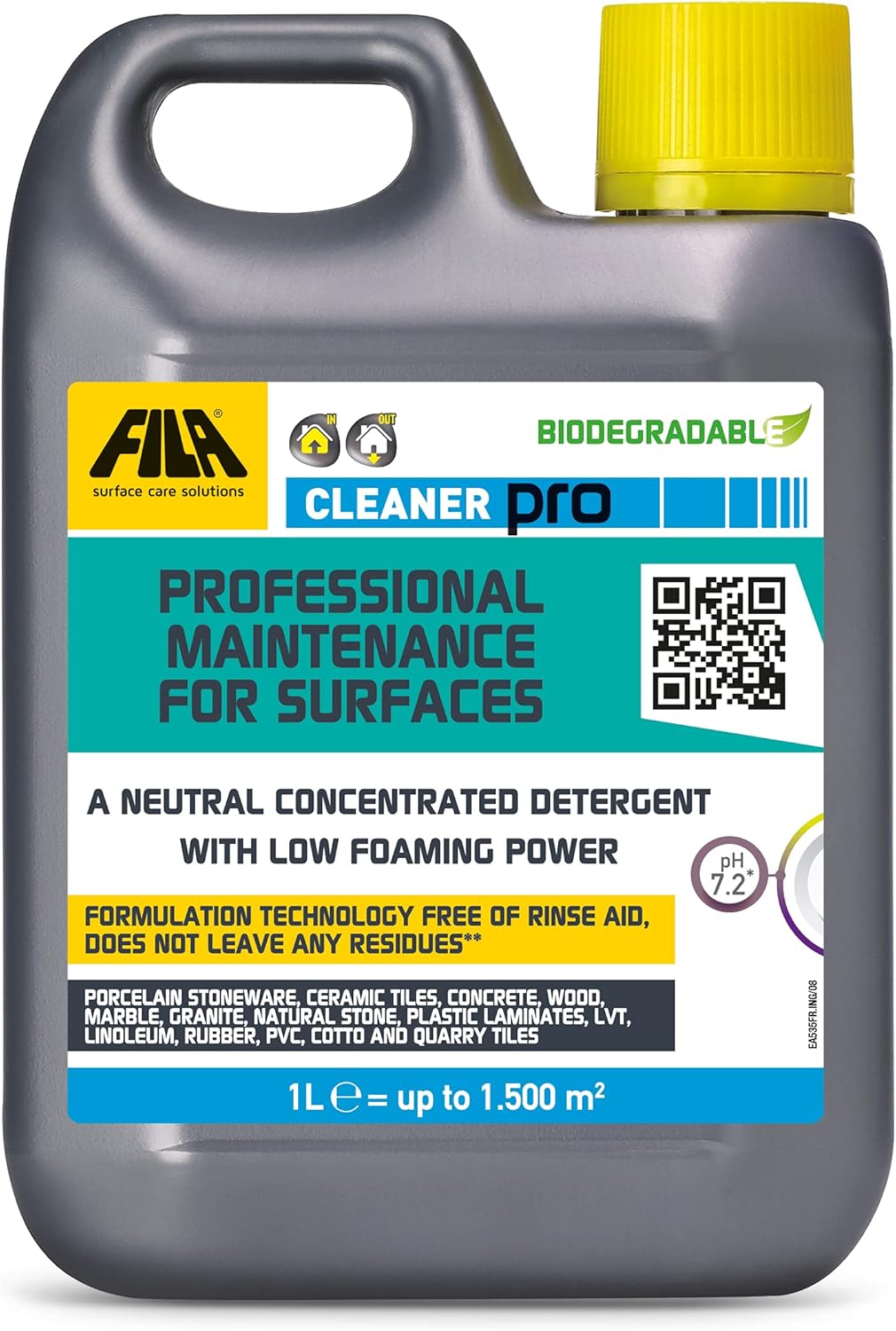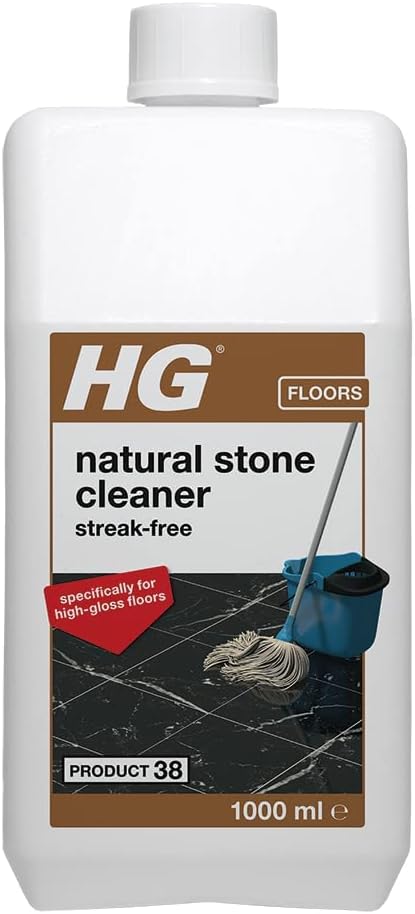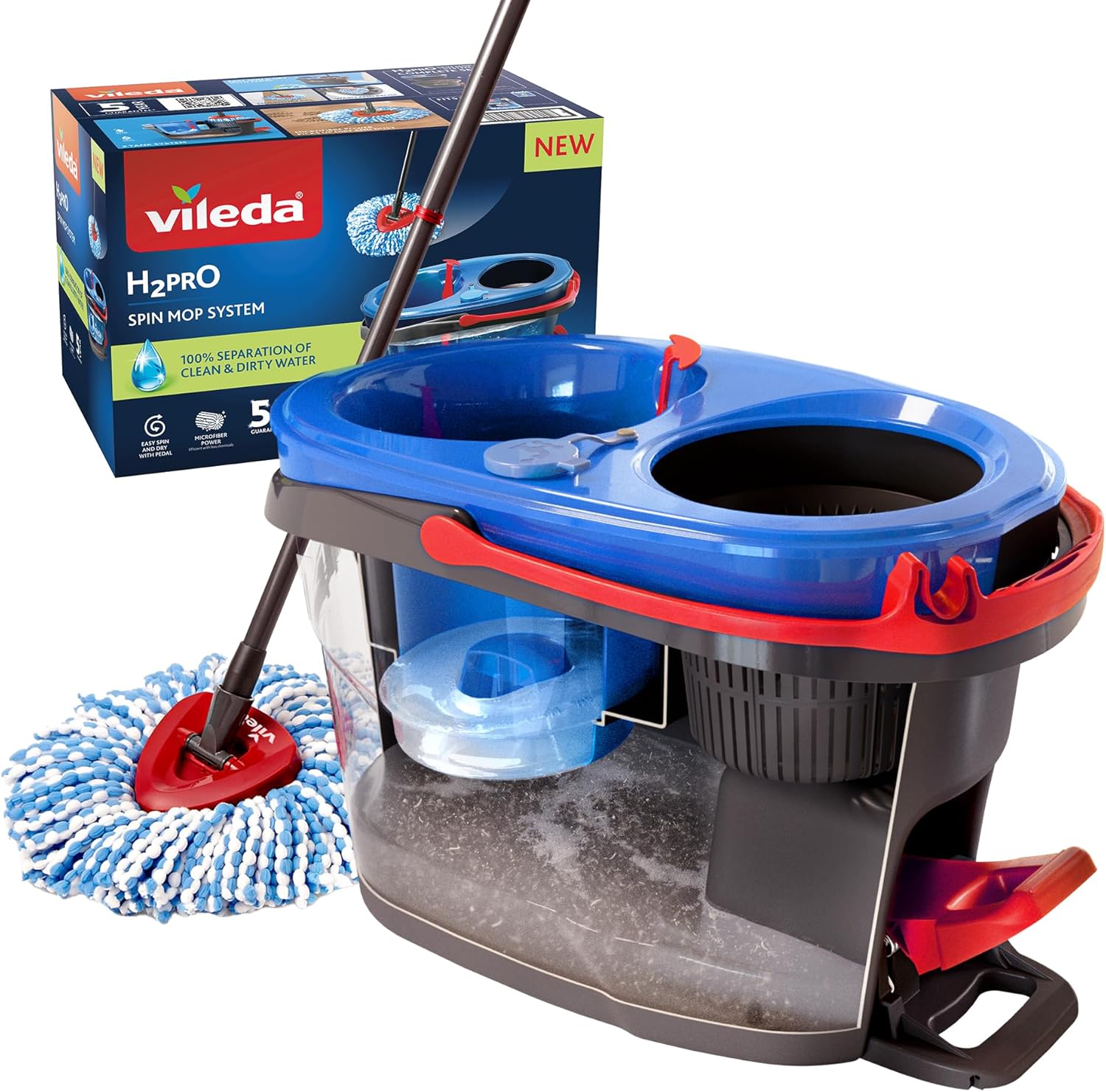Last Updated on July 18, 2025 by David
Discover the Beauty and Value of Travertine Flooring
Travertine Floor Cleaning: Travertine, a stunning and versatile natural stone, is not merely a decorative choice but a strategic investment in the aesthetic appeal and overall value of your home. This extraordinary stone is formed in mineral-rich springs, where unique geological processes create a captivating stone that harmoniously combines beauty with long-lasting durability. The distinctive formation process yields a porous texture, which contributes to the unique appearance of travertine, making it a highly sought-after choice among discerning homeowners throughout the UK.
Defining the Unique Characteristics of Travertine

Travertine is a specific type of limestone that is formed from natural springs, particularly in areas characterised by hot springs or volcanic activity. The creation of travertine involves the deposition of calcium carbonate when mineral-rich water evaporates. This stone is celebrated for its beautiful appearance, showcasing a variety of shades including cream, beige, and brown, often adorned with distinctive patterns and textures that enhance its charm.
Expert Recommendations: Top Products for Daily Maintenance
In the UK, travertine flooring is highly regarded for its ability to harmonise beautifully with a multitude of design styles, spanning from rustic charm to modern minimalism. The remarkable aesthetics of travertine floors can significantly enhance living areas, infusing them with a luxurious ambience that appeals to both homeowners and interior designers. Furthermore, the robust nature of travertine makes it an ideal choice for high-traffic areas, ensuring that it retains its stunning appearance over time when properly cared for.
Grasping the fundamental qualities of travertine is essential for homeowners contemplating this exquisite material for their flooring needs. Its porous structure, while contributing to its natural allure, necessitates dedicated attention to cleaning and maintenance to avert staining and wear. Consequently, investing in a travertine floor cleaning service can be a prudent decision, ensuring the preservation of the stone’s integrity and visual appeal over time.
Exploring Common Applications of Travertine in UK Residences
The popularity of travertine flooring has surged in both residential and commercial environments throughout the United Kingdom. Its inherent versatility enables it to be applied in various settings, including kitchens, bathrooms, and hallways. Homeowners are drawn to travertine for its elegant visual appeal, which bestows a refined touch to interior spaces.
A key advantage of travertine is its remarkable ability to retain heat, making it an exceptional option for underfloor heating systems that are commonly installed in UK homes. This characteristic not only enhances comfort but also contributes to greater energy efficiency, as travertine helps to moderate indoor temperatures effectively.
In commercial settings, travertine is commonly used in restaurants, hotels, and retail establishments. Its durability and timeless aesthetics can withstand substantial foot traffic while maintaining a polished appearance. The natural variations in travertine ensure that no two installations are identical, offering a unique charm to any establishment.
As the trend towards sustainable materials grows, the eco-friendly qualities of travertine further enhance its attractiveness. Being a natural stone, it boasts a lower environmental impact in comparison to synthetic flooring alternatives, making it a conscientious choice for those who are mindful of their carbon footprint.
The Importance of Regular Cleaning for Travertine Floors
Maintaining travertine floors through regular cleaning is essential, not only for hygiene but also for preserving the stone’s beauty and longevity. Over time, dirt, dust, and stains can accumulate, leading to a lacklustre appearance that detracts from the natural elegance of travertine.
Engaging a travertine floor cleaning service guarantees that your floors receive treatment with methods and products specifically designed for this unique type of stone. Professional cleaners are equipped with the expertise and tools necessary to safely remove dirt and stains while safeguarding the integrity of the travertine surface.
Moreover, keeping travertine floors clean can help avert more serious issues, such as etching or staining from spills. Immediate cleaning can mitigate the risks associated with the stone’s porous nature, ensuring that your travertine continues to radiate beauty for years to come.
In the UK, where weather conditions can be unpredictable, diligent maintenance becomes even more vital. The damp climate can encourage the growth of mould and mildew on inadequately cleaned surfaces. Therefore, investing in a reliable cleaning service is not just beneficial but essential for safeguarding your investment in travertine flooring.
Effective Cleaning Techniques for Travertine Floors

Understanding effective cleaning techniques is paramount for maintaining the exquisite appearance of your travertine floors. Various methods can be employed, depending on the nature of the dirt or stains present.
Utilising Dry Cleaning Techniques for Regular Maintenance
Dry cleaning methods for travertine flooring primarily involve the use of brushes and vacuum cleaners to remove dust and debris without introducing moisture. This technique is particularly advantageous for quick touch-ups or routine maintenance, ensuring that dirt does not accumulate and become embedded in the porous surface.
Employing a soft-bristled brush can effectively dislodge dirt particles without scratching the stone’s surface. High-quality vacuum cleaners equipped with appropriate attachments can also be beneficial, providing a thorough clean while being gentle on the travertine. For everyday upkeep, this method is ideal, as it prevents the build-up of grime and preserves the visual appeal of your floors.
However, while dry cleaning is efficient for immediate dirt removal, it is essential to complement this approach with wet cleaning periodically to achieve a deep clean and address any persistent stains. Integrating both techniques ensures that your travertine floors receive comprehensive care, enhancing their durability and longevity.
Implementing Wet Cleaning Techniques for Deep Cleaning
Wet cleaning methods offer a deeper clean, which is essential for preserving the elegance of travertine flooring. This approach typically employs water combined with mild detergents specifically formulated for natural stone. These cleaning agents effectively break down stubborn stains and grime, ensuring a thorough cleanse without risking damage to the stone.
When opting for this method, it is vital to select pH-neutral cleaners, as acidic or abrasive substances can harm the travertine’s surface. The cleaning process involves mopping the floors with a damp cloth or mop, allowing the cleaner to penetrate the surface for an effective cleanse.
Regular wet cleaning not only tackles surface stains but also helps to rejuvenate the stone, restoring its natural shine. In areas subject to heavy foot traffic or where spills are more likely, implementing a consistent wet cleaning routine can significantly extend the lifespan of your flooring.
Moreover, users should exercise caution to avoid saturating the stone with excess water, as prolonged exposure can lead to damage or promote mould growth. Therefore, understanding how to implement wet cleaning methods effectively is essential for maintaining the beauty and functionality of travertine floors.
Comparing Professional Cleaning Services to DIY Methods

When it comes to cleaning travertine, homeowners often face the decision of whether to hire professional services or attempt the task themselves. Hiring a professional travertine floor cleaning service offers distinct advantages, especially for those without experience in maintaining natural stone.
Professionals possess specialised equipment and cleaning agents that are meticulously formulated for travertine. Their expertise in identifying and addressing various types of stains ensures that your flooring receives optimal care. They can also offer invaluable advice on ongoing maintenance strategies to keep your travertine looking pristine.
Conversely, DIY cleaning can be a cost-effective solution for homeowners who prefer to oversee their cleaning routines. Basic techniques can be effectively applied with the right products and methods. However, it necessitates a comprehensive understanding of travertine’s requirements to avoid potential damage.
For those contemplating a DIY approach, it is crucial to research proper techniques and invest in high-quality cleaning products. While regular upkeep can be manageable, specific deep cleaning tasks may be more suitably handled by professionals, especially when significant stains or wear are present. Ultimately, the choice between professional and DIY cleaning hinges on individual circumstances, budget, and the condition of the travertine floors.
Effective Stain Removal Techniques for Travertine
Stains on travertine can present a considerable challenge, given the stone’s porous characteristics. Prompt and effective stain removal is vital to prevent permanent damage and maintain the allure of your floors. Different types of stains call for specific approaches, underscoring the importance of understanding the nature of the stain.
For oil-based stains, such as cooking oil or grease, a poultice made from baking soda and water can be applied to absorb the stain. This method is effective as it draws the oil out of the stone without causing further damage. After applying the poultice, cover it with plastic wrap to allow it to work over an extended period.
In contrast, stains caused by acidic substances, such as fruit juice or vinegar, can lead to etching on travertine. To address this, a specialised etch remover designed for natural stone must be used. It’s imperative to follow the manufacturer’s instructions diligently, ensuring that the product is applied correctly to avoid exacerbating the issue.
Professional travertine floor cleaning services often have access to advanced stain removal techniques and products that can effectively treat more persistent stains. Their expertise can also help identify stains early on, preventing them from escalating into more significant concerns.
In summary, understanding the various types of stains that may affect your travertine and employing appropriate removal techniques is essential for preserving the stone’s integrity. Regular cleaning and prompt stain treatment can help ensure that your floors remain as stunning as the day they were installed.
Addressing Common Cleaning Challenges with Travertine Flooring
Despite its stunning beauty and impressive durability, travertine flooring presents several unique cleaning challenges related to its composition and structure.
Managing Stains Effectively on Travertine
Stains on travertine floors can be particularly problematic due to the stone’s porous nature. The stone's ability to absorb liquids means that spills must be addressed immediately to prevent long-term damage. Common culprits include wine, coffee, and cleaning products that may inadvertently etch or stain the surface.
Preventive measures are crucial in managing stains on travertine. Regular sealing can significantly reduce the stone’s absorbency, making it less prone to staining. Homeowners should also educate themselves on swift response techniques, such as blotting spills with a soft cloth instead of wiping, which can inadvertently spread the stain.
If stains do occur, using the correct cleaning products is essential. Many commercial options claim to remove stains, but they can be harsh on the stone. It’s advisable to consult with a professional cleaning service for recommendations on effective yet gentle cleaning solutions specifically formulated for travertine.
Through ongoing maintenance and prompt action against potential stains, homeowners can significantly mitigate the risk of long-term damage, ensuring their travertine floors remain pristine.
Preventing Etching and Scratches on Travertine
The risk of etching and scratching is a well-known challenge associated with travertine floors. Etching occurs when acidic substances, such as lemon juice or vinegar, come into contact with the stone, damaging its surface and leaving behind dull, patchy areas.
Scratches, often caused by moving heavy furniture or dragging dirt and debris across the floor, can also compromise the beauty of travertine. To prevent these issues, homeowners should implement protective measures, such as using felt pads under furniture legs and avoiding acidic cleaners that could contribute to etching.
For homeowners dealing with existing etching, professional polishing services can restore the stone’s original finish. This process involves grinding down the surface to remove the damaged layer and reveal a fresh, undamaged section of travertine beneath. Regular maintenance, including sealing and careful product selection, can significantly reduce the likelihood of scratches and etching, allowing your travertine to shine.
Combating Mould and Mildew Growth on Travertine
In the UK’s damp climate, preventing mould and mildew from developing on travertine floors is a significant concern. The porous nature of travertine means it can retain moisture, creating an ideal environment for these unwanted growths.
Regular cleaning and adequate ventilation are paramount in combating mould and mildew. Homeowners should ensure that their spaces are well-ventilated, especially in areas prone to humidity, such as bathrooms or kitchens. Using dehumidifiers can also be beneficial in managing moisture levels.
If mould does develop, it’s essential to act promptly to prevent it from spreading. A mixture of water and vinegar can effectively treat small areas of mould; however, more extensive infestations may necessitate professional intervention.
By concentrating on prevention and early treatment, homeowners can maintain a healthy environment while preserving the integrity of their travertine flooring.
Understanding and Managing Efflorescence on Travertine
Efflorescence manifests as a white, powdery residue on the surface of travertine, resulting from the migration of soluble salts to the stone's surface. This phenomenon can occur when water seeps into the stone; it can be unsightly and may cause concerns for homeowners.
To manage efflorescence, it is vital to identify and eliminate the source of moisture. Waterproofing the substrate beneath the travertine can help prevent water intrusion, thereby significantly reducing the chances of efflorescence occurring.
If efflorescence appears, it can often be removed with a gentle scrub using a soft brush and a mild detergent solution. However, care should be taken to ensure that no abrasive materials are used, as they can damage the stone. In severe cases of efflorescence, consulting a professional cleaning service may be necessary to restore the travertine’s appearance.
Implementing preventative measures and understanding how to address efflorescence can help homeowners maintain the beauty and functionality of their travertine floors.
Tackling Yellowing on Travertine Floors
Yellowing is a common issue for travertine floors, often resulting from prolonged exposure to sunlight or the use of certain cleaning products that can leave a residue. This discolouration not only affects the aesthetic appeal of the stone but can also indicate deeper issues related to the flooring’s care.
To combat yellowing, regular cleaning is essential. Homeowners should ensure that they are utilising appropriate cleaning products that are gentle on natural stone. Additionally, applying a quality sealer can help protect the travertine from UV damage and keep it looking fresh.
For existing yellowing, professional cleaning services can often restore the stone’s original colour through specialised treatments. Regular maintenance, including resealing and careful product selection, can mitigate yellowing, extending the life and beauty of travertine floors.
Selecting the Best Cleaning Products for Travertine Floors
Choosing the right cleaning products is critical for maintaining the aesthetic appeal and integrity of travertine floors. The incorrect products can lead to damage, diminishing the stone’s allure.
Choosing pH-Neutral Cleaners for Safe Cleaning
When it comes to cleaning travertine, pH-neutral cleaners are the safest and most effective option. These cleaners are specifically formulated to remove dirt and grime without harming the stone’s surface. Acidic or abrasive products can lead to etching and dullness, making it essential to choose wisely.
In the UK, a variety of pH-neutral cleaners are readily available in hardware stores and online. Homeowners should seek out products that explicitly state their compatibility with natural stone, providing reassurance that they won’t cause damage.
Regular use of these gentle cleaning solutions can help maintain the stone’s original lustre and prevent long-term complications. Combining pH-neutral cleaners with consistent maintenance, such as sealing, can ensure that travertine floors remain stunning for years to come.
Understanding the Role of Sealers and Enhancers in Travertine Care
Sealers play a crucial role in protecting travertine from stains, moisture, and wear and tear. A high-quality sealer creates a barrier that reduces the stone’s absorbency, preventing liquids from penetrating the surface and causing damage.
Homeowners should opt for natural stone sealers that are specifically formulated for travertine. These products not only offer protection but can also enhance the stone’s natural beauty, highlighting its unique patterns and colours. Regular resealing, typically every 1-3 years, is essential for maintaining the effectiveness of the sealer.
Enhancers also provide an excellent option for homeowners looking to enrich the appearance of their travertine floors. These products can deepen the colour of the stone and impart a subtle sheen, elevating the overall aesthetic of any space.
Selecting the right sealers and enhancers is vital for preserving the beauty and functionality of travertine. By investing in high-quality products, homeowners can extend the lifespan of their flooring while preserving its natural beauty.
Where to Find Quality Cleaning Products in the UK
In the UK, specialised cleaning products for travertine can be found at various hardware stores and online retailers. For home improvement enthusiasts, local DIY centres often stock a range of pH-neutral cleaners, sealers, and enhancers specifically designed for natural stone.
Online platforms offer a broader selection, enabling homeowners to compare products and read reviews from others who have used them. Major retailers often feature dedicated sections for natural stone care, making it easy to locate the appropriate products for travertine maintenance.
When shopping for cleaning solutions, it’s essential to read labels carefully and ensure that the products are suitable for use on travertine. Investing time in sourcing quality products will yield long-term benefits, helping to maintain the elegance and integrity of your floors.
Exploring Eco-Friendly Cleaning Options for Travertine
As sustainability becomes an increasingly important consideration for consumers, eco-friendly cleaning products are gaining popularity in the UK. These products are often gentler on both travertine and the environment, making them an appealing choice for conscientious homeowners.
Many eco-friendly cleaners utilise natural ingredients that effectively clean without harsh chemicals. For travertine, selecting biodegradable and non-toxic options can help preserve the stone’s beauty while ensuring minimal environmental impact.
In addition to cleaning products, eco-conscious homeowners may wish to explore sustainable sealing options that provide adequate protection for travertine floors without compromising environmental standards. Many local retailers now offer a selection of environmentally friendly products that cater to a wide range of cleaning needs.
By opting for eco-friendly cleaning solutions, homeowners can maintain their travertine floors while contributing to a healthier planet. The availability of these products in the UK makes it easier than ever to make responsible choices for your home.
Essential Maintenance Tips for Travertine Floors in the UK
Maintaining travertine floors necessitates a thoughtful approach that balances regular cleaning with preventive measures.
Establishing a Daily Care Routine
A consistent daily care routine is paramount for preserving the beauty of travertine floors. Sweeping or vacuuming daily helps eliminate dust and debris before they can scratch the surface. Homeowners should utilise a soft-bristle broom or a vacuum cleaner with a hard floor attachment to protect the stone.
In addition to regular sweeping, placing doormats at entrances can significantly reduce dirt tracked onto the floor from outside. Encouraging family members and guests to wipe their shoes can help minimise the amount of grit that comes into contact with the travertine, thus protecting it from potential damage.
Water spills should be addressed immediately, as the porous nature of travertine makes it susceptible to staining. A quick blot with a soft cloth can usually prevent stains from setting in.
Implementing this daily care routine can vastly improve the longevity and appearance of travertine floors, ensuring they remain a stunning feature of your home.
Conducting Seasonal Deep Cleaning
In the UK, seasonal deep cleaning of travertine floors is essential to combat the effects of fluctuating weather conditions. During winter, for instance, salt and grit from snowy conditions can accumulate, necessitating a thorough clean to prevent abrasion and staining.
A deep clean typically involves wet cleaning methods with pH-neutral detergents, ensuring all dirt, grime, and potential residues are effectively removed. Homeowners might consider scheduling deep cleans at the beginning of each season to maintain a systematic approach to floor care.
After seasonal deep cleaning, it’s an excellent opportunity to assess the condition of the sealer on the travertine. If the floors appear dull or if moisture seems to penetrate the surface, it may be time to reapply a quality sealer.
By incorporating seasonal deep cleaning into your maintenance routine, you can ensure that your travertine floors remain in excellent condition, safeguarding them against the impacts of seasonal changes.
Implementing Long-Term Protection Strategies
Creating long-term protection strategies for travertine floors is crucial for sustaining their appearance and functionality. Regular sealing is one of the most effective ways to preserve the stone, as it creates a protective barrier against stains and moisture.
In addition to sealing, homeowners should remain vigilant about addressing any signs of damage or wear and tear. Prompt repairs are vital in preventing more significant issues that can arise from neglected floors. This may involve consulting a professional to assess and rectify problems such as etching or scratches, ensuring the travertine remains in optimal condition.
Educating yourself about the specific needs of travertine flooring is also vital. Understanding the best cleaning products and methods tailored to this type of stone can have lasting benefits.
By taking proactive measures and investing in regular maintenance, homeowners can enjoy the timeless beauty of their travertine floors for many years to come.
How to Choose the Right Travertine Cleaning Service in the UK
Selecting the ideal cleaning service for your travertine floors is crucial for ensuring they receive the care they deserve.
Key Qualities to Consider When Selecting a Cleaning Service
When searching for a travertine floor cleaning service, it’s essential to evaluate several factors to ensure you select a reputable provider. Look for services based in the UK that have extensive experience in cleaning natural stone, particularly travertine.
Researching customer reviews and testimonials can provide valuable insights into the quality of the service offered. A company with positive feedback and a solid reputation is more likely to deliver satisfactory results.
Verify that the cleaning service holds the proper certifications and employs trained professionals who understand the nuances of cleaning and maintaining travertine. This expertise can make a significant difference in the outcome of your cleaning experience.
Investing time in finding an exemplary cleaning service can pay off in terms of preserving the beauty and integrity of your travertine floors.
Frequently Asked Questions about Travertine Care
What is travertine, and why is it a popular flooring choice?
Travertine is a type of limestone formed from mineral-rich springs, renowned for its exceptional durability and distinctive texture. It is popular for flooring in the UK due to its aesthetic appeal and ability to blend with various design styles.
How frequently should travertine floors be cleaned?
Travertine floors should be cleaned regularly, ideally daily through sweeping or vacuuming, with deep cleaning every few months to remove built-up dirt and prevent potential staining.
Is it safe to use regular household cleaners on travertine floors?
No, regular household cleaners can be too harsh for travertine. Opt for pH-neutral cleaners specifically designed for natural stone to prevent damage to the surface.
What measures can I take to prevent stains on my travertine floor?
To prevent stains, clean spills immediately, use coasters under drinks, and consider applying a quality sealer that can reduce the stone’s absorbency.
Are professional cleaning services worth the investment for travertine floors?
Yes, professional cleaning services have the expertise and specialised equipment to clean travertine effectively, ensuring thorough care that can enhance the longevity and appearance of your floors.
How can I remove scratches from travertine floors?
Minor scratches can often be polished out using a fine-grit diamond pad or a specialised polishing compound. For deeper scratches, consult a professional treatment service.
Is sealing travertine floors necessary?
Yes, sealing is essential as it protects the stone from moisture, stains, and wear, ensuring that your travertine floors maintain their beauty over time.
What should I do if I find mould on my travertine floors?
If mould appears, act quickly by cleaning the area with a mixture of water and vinegar. For extensive growth, consider hiring a professional to ensure thorough removal.
How can I enhance the shine of my travertine floors?
To enhance the shine, use a stone enhancer designed for travertine, and ensure regular cleaning and polishing to maintain the stone’s natural lustre.
Where can I purchase cleaning products for travertine in the UK?
Specialised cleaning products for travertine can be found at UK hardware stores or online retailers, focusing on those that offer natural stone care solutions.
The Article Travertine Floor Cleaning Service: Expert Solutions first found on https://www.abbeyfloorcare.co.uk






Your exploration of travertine flooring beautifully captures the intersection of nature and design. I’ve always been fascinated by how materials like travertine not only elevate the aesthetic of our homes but also carry stories of the earth’s history within them. This porous stone, with its unique textures, reminds us that even in a fast-paced, technology-driven world, the beauty of nature still has a profound place in our living spaces.